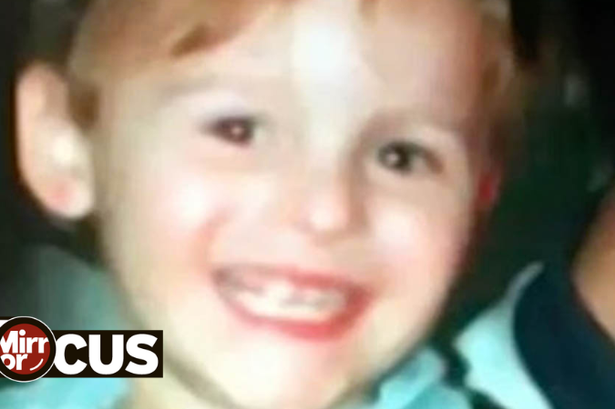The grainy, silent CCTV footage captured on February 12, 1993, at the Strand Shopping Centre in Bootle, Merseyside, became a haunting symbol of a crime that shocked the world: the abduction and murder of two-year-old James Bulger. The images, though low-resolution and fleeting, showed the toddler being led away by two older boys, later identified as ten-year-olds Robert Thompson and Jon Venables. This seemingly innocuous act, captured in the bustling backdrop of a busy shopping center, masked a horrific reality. Little James, a bright and playful child, was being unwittingly led to his death by two peers, in a crime that would expose the depths of juvenile depravity and ignite a firestorm of public outrage and grief.
The abduction itself was opportunistic and chillingly casual. James, a curious and trusting toddler, had momentarily strayed from his mother, Denise, inside the butcher shop while she was distracted. This brief lapse of attention provided the opening for Thompson and Venables, who were themselves truanting from school that day. They approached James, engaged him in conversation, and then, with an unsettling air of normalcy, led him by the hand out of the shopping centre. The CCTV footage, later scrutinized frame by frame by investigators and broadcast nationwide during the desperate search for James, became a pivotal piece of evidence, chronicling the beginning of a tragic journey that would end in unimaginable horror.
The boys’ subsequent actions, pieced together through witness testimonies, forensic evidence, and their own eventual confessions, painted a disturbing picture of escalating violence and callous indifference. They led James on a two-and-a-half-mile walk across Bootle, during which they were seen by numerous witnesses who, tragically, mistook them for brothers or simply failed to intervene. Along the way, Thompson and Venables subjected James to a series of assaults, both physical and psychological, tormenting the frightened and confused toddler. These acts of cruelty, steadily intensifying in their brutality, revealed a disturbing lack of empathy and remorse on the part of the two young perpetrators.
The final destination of their horrific journey was a railway line near Walton, where the full extent of their depravity unfolded. James, by then severely injured and traumatized, was subjected to a sustained and savage attack. The details of his injuries, presented in court and later widely reported, were so horrific that they shocked even seasoned investigators and legal professionals. The sheer brutality of the attack, inflicted by children barely into their double digits, defied comprehension and sparked a national debate about the nature of evil and the capacity for violence within even the youngest members of society.
The discovery of James’s mutilated body two days later beside the railway tracks sent shockwaves through the nation and beyond. The public outcry was immense, fueled by a mixture of grief, anger, and disbelief. The image of the innocent toddler, led away from his mother’s side in that grainy CCTV footage, became etched in the public consciousness, a stark reminder of the vulnerability of children and the dark undercurrents that can exist beneath the surface of seemingly ordinary communities. The case became a lightning rod for discussions about parenting, social responsibility, and the effectiveness of the juvenile justice system. Many questioned how two ten-year-olds could commit such a heinous act and demanded answers about what could be done to prevent similar tragedies from occurring in the future.
The subsequent trial of Thompson and Venables, held amidst intense media scrutiny and public pressure, became a landmark case in British legal history. The boys, the youngest ever to be charged with murder in the 20th century, were found guilty and sentenced to indefinite detention, later revised to a minimum of eight years. Their identities were protected by court order, and upon release, they were granted new identities to shield them from public retribution. The case continues to generate debate and discussion, raising complex questions about the nature of childhood, the capacity for rehabilitation, and the balance between punishment and the protection of children’s rights. The grainy CCTV footage, forever linked to this tragic story, serves as a chilling reminder of the fragility of life and the enduring power of evil, even in the most unexpected of forms.














